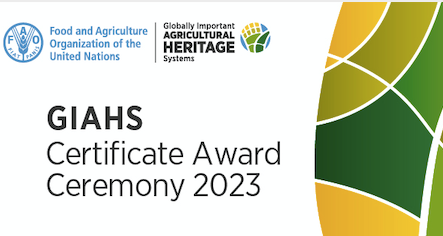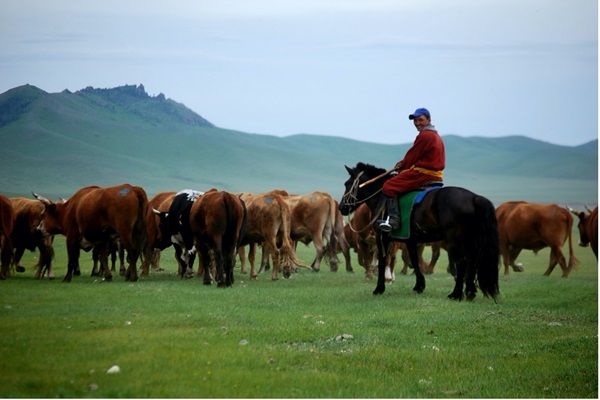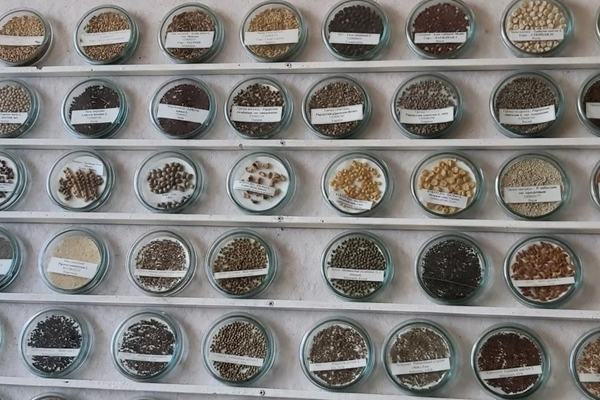
Global Environment Facility approves 26 FAO-led projects to transform agrifood systems into solutions for environmental challenges
27/06/2023

G20 Agriculture Ministers: "Agrifood systems must be part of the solution to the biodiversity and climate crises," FAO Director-General says
16/06/2023

World Oceans Day must be Humans Day: FAO Fisheries chief
05/06/2023
The term aquatic foods refers to the 3000 different species of fish, mollusks, crustaceans and algae that we catch, and over 650 species that we culture. According to the expert, it is a huge biodiversity that offers exceptional long-term food opportunities and renewable solutions, if managed properly. Furthermore, growing many of them has a much lower environmental impact than growing land-based animal production systems.

FAO at UNFF18: towards a nexus approach for sustainable forest management
12/05/2023

Breaking the plastic cycle in agriculture for biodiversity benefits
05/06/2023

Life support: The Global Biodiversity Framework is a crucial step toward preserving our planet's ecosystems
01/06/2023

Africa, Caribbean and Pacific Conference on the Implementation of the Outcomes of the CBD COP15 and Cites Cop19
01/06/2023

Celebrating the diversity of Globally Important Agricultural Heritage Systems
22/05/2023

2023 Globally Important Agricultural Heritage Systems (GIAHS) Certificate Award Ceremony and GIAHS Exhibition
22/05/2023
Since 2018, 24 new GIAHS in 12 countries have been designated. They represent not only stunning natural landscapes but also agricultural practices that create livelihoods in rural area...

The Moroccan beekeepers’ mission to preserve the Saharan Yellow Bee
20/05/2023
4300aa4df7514ce7b7831612b497834f.tmb-th600x400.png?Culture=en&sfvrsn=75ac6d64_1)
Bee-ing grateful to our pollinators
20/05/2023

Mongolia's livestock breeds, a precious part of global biological diversity
22/05/2023

Preserving biodiversity saves money: Rwandan farmer Zainab Byukusenge
09/05/2023

Ukraine’s national seed collection relocates to a secure site
02/05/2023

To transform agrifood systems, we must implement climate change and biodiversity agendas in tandem
30/03/2023
Brussels, Geneva and New York – The rethinking of food and agriculture and the necessary sector transformations we need moving forward must take into consideration the implementation of the closely interlinked climate change and biodiversity outcomes from COP27 and COP15, respectivel...

FAO advances conservation and sustainability on the high seas
05/03/2023
The high seas comprise nearly two-thirds of the world's ocean and are filled with a variety of fish species, which are essential for the ocean's biodiversity. They are part of flourishing ecosystems that regulate our climate, provide vital habitats for hundreds of thousands of species and support crucial fisheries.
But high seas ecosystems are facing new challenges: climate change, pollution, and unsustainable practices are threatening their fragile balance. Rising water temperatures are forcing many species to find new habitats, while unsustainable practices, such as overfishing, are impacting fish stocks and biodiversity.

Protecting wildlife and Indigenous Peoples’ livelihoods in the Democratic Republic of the Congo
03/03/2023
"I have a duty to protect the forest, as it feeds me and my family," says Thomas.
The Ituri Forest, which Thomas Aseli speaks about with emotion, is located in the northeast of the Democratic Republic of the Congo and is a sacred place for the Mbuti Indigenous People. Within this spectacular rainforest is the Okapi Wildlife Reserve. It occupies about one-fifth of the forest and houses some of the richest wildlife in central Africa, including a large population of the reserve’s iconic okapi, also known as a forest giraffe. It is also home to more than 100 species of mammals, including several endangered species such as the forest elephant and the eastern chimpanzee.

Register for webinar 28 February 2023
28/02/2023
Tuesday 28 February 2023
12:00-14:00
Wild plant genetic resources for food and agriculture: their conservation and sustainable use
This webinar is a follow up to the First International Multi-stakeholder Symposium on Plant Genetic Resources for Food and Agriculture: Technical Consultation on in situ conservation and on-farm management of PGRFA, held in March 2021. At this event, examples of the continuum of management practices for wild plant genetic resources for food and agriculture, from their conservation to use in breeding improved crop varieties, will be presented and discussed.

Globally Important Agricultural Heritage Systems: Two new sites recognized in Ecuador’s Andes and Amazon regions
14/02/2023

‘Mainstreaming Biodiversity across Agricultural Sectors’ project on track
08/02/2023
8 February 2023 - Agrifood systems have the potential to make a significant contribution to the 2030 Agenda and more specifically to the conservation, sustainable use and restoration of biodiversity as stipulated in the Convention on Biological Diversity and the Kunming-Montreal Global Biodiversity Framework.
